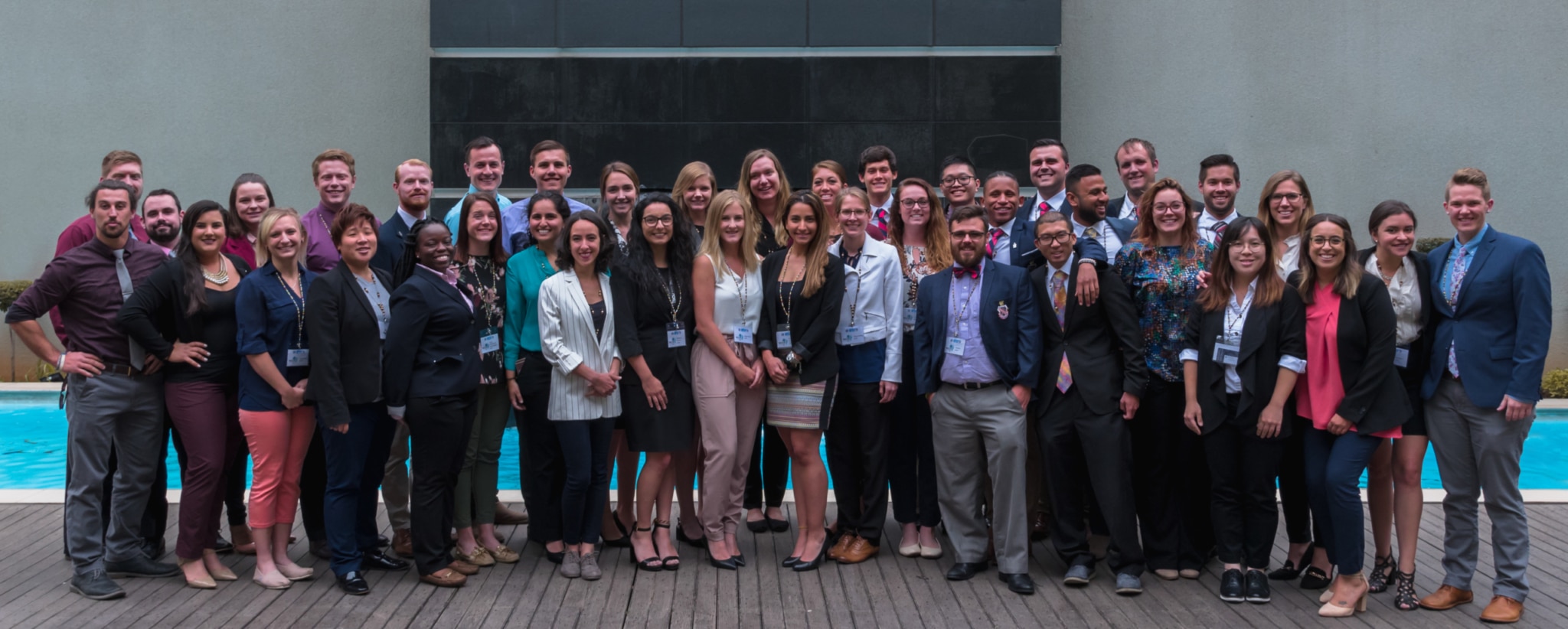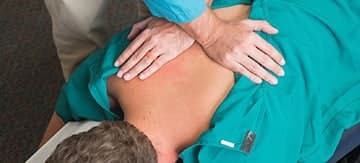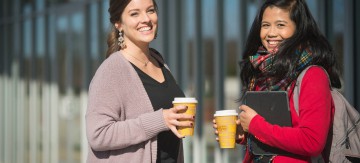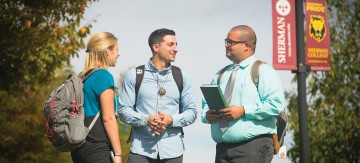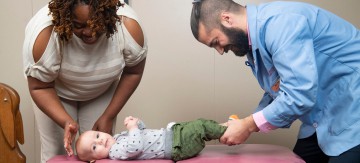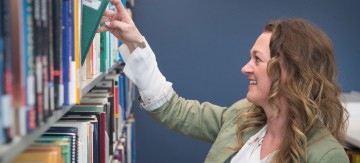[et_pb_section bb_built=”1″][et_pb_row][et_pb_column type=”4_4″][et_pb_image _builder_version=”3.17.6″ src=”https://www.sherman.edu/wp-content/uploads/2018/09/WCCS_Group.jpg” align=”center” animation_style=”slide” animation_direction=”left” /][et_pb_text _builder_version=”3.17.6″]
Ek sal nooit dieselfde wees nie. – Afrikaans
I will never be the same.
by Russell Goff
This summer, I was honored to represent Sherman College of Chiropractic in Johannesburg, South Africa, at a global gathering of chiropractic students. The World Congress of Chiropractic Students (WCCS) is a student-run organization whose purpose is to “advance and unite the global chiropractic profession through inspiration, integrity and leadership.” The WCCS truly is a unique organization within chiropractic where the diversity of the profession is not only represented but expressed.
Each year, twenty-seven chiropractic schools from around the world send delegates to the Annual Global Meeting (AGM). The student representatives come together, uniting the profession under the banner of chiropractic, and discuss the challenges facing chiropractic and healthcare around the world. The University of Johannesburg hosted this year’s meeting.
A hundred student delegates representing more than 20 chiropractic colleges from four continents met at the 2018 AGM. Using Robert’s Rules of Order, we presented, debated and voted on several proposals. Each institution’s representatives had the opportunity to speak on the floor for discussions and amendments. Delegates representing the full diversity of the chiropractic profession respectfully worked through differences in opinion, philosophy, and scope of practice.
[/et_pb_text][et_pb_image _builder_version=”3.15″ src=”https://www.sherman.edu/wp-content/uploads/2018/09/WCCS3-2.jpg” align=”center” module_alignment=”center” max_width=”75%” /][et_pb_text _builder_version=”3.15″]
As many of you know, chiropractic represents a very diverse community of health care providers, which is a direct result of the very diverse institutional foundations. It was an honor for me to represent Sherman College, the principle of vertebral subluxation, and the chiropractic philosophy created and developed by D.D. and B.J. Palmer.
During discussion on the Congress floor, I was very intentional in how and when I spoke up. There were several times that I would begin my point by first laying down a simple philosophical truth before sharing my point. It was one of these comments during the first day that earned me the nickname “Mr. Philosophy.”
On the floor, we debated where chiropractic fit into the public health sector around the world. Several schools began discussing how chiropractic is the industry expert in treating low back pain. Many schools echoed the same sentiment: that since chiropractic is proven to help with low back pain, it should be the gatekeeper for prescribing pain medication. They believed that if it turned out that a chiropractor could not help the low back pain, then he/she should be the one able to prescribe the drugs to help the patient manage the pain.
In immediate response, the delegates from one college spoke up against the idea of chiropractors prescribing drugs, since most people who go to a chiropractor have already tried that avenue of treatment.
[/et_pb_text][et_pb_image _builder_version=”3.15″ src=”https://www.sherman.edu/wp-content/uploads/2018/09/WCCS2-2-e1536940604709.jpg” module_alignment=”center” align=”center” max_width=”50%” /][et_pb_text _builder_version=”3.15″]
I then had the floor, and I did not even address the elephant in the room of chiropractors prescribing drugs. Being that I represent the school with the most philosophical grounding, I could tell that everyone was ready for me to simply agree with the previous speaker and present some philosophical perspective. I instead completely shifted the direction of conversation.
I shared this: “Being that chiropractors are the only profession that helps patients clear the interference from their brain to their body, we need to focus on our wheelhouse: correcting the misalignments of vertebrae so our patient’s nervous system is being completely expressed.” By introducing the philosophy as a truth, it was never challenged on the floor, and it created many amazing conversations with students off the Congress floor. Students who had never been taught philosophy, those who had been taught to be “against” chiropractic philosophy, and those who had a sound philosophical foundation all came to me with thoughts, challenges and conversations throughout the week.
[/et_pb_text][et_pb_image _builder_version=”3.15″ src=”https://www.sherman.edu/wp-content/uploads/2018/09/WCCS4-2.jpg” module_alignment=”center” align=”center” max_width=”75%” /][et_pb_text _builder_version=”3.15″]
Peer-to-peer interaction was by far the most rewarding part of the trip for me. The caliber of students that represented each educational institution was superb. I know that the future world leaders of chiropractic were represented, and I will see many of them as heads of chiropractic organizations in the coming years.
The students that I enjoyed talking with the most were from a school where they are actually taught against the original chiropractic philosophy, which has been described to them as an “old perspective that needs to be left in the past.” At first, the students were ready to start a conversation around our conflicting views, but it did not take long for us to circle around to ideas and concepts we agreed on. The new generation of chiropractors, though taught by professors that are very rigid in their dogmatic approach, are eager to bring the best to the table to see how we can work together toward a common goal. Through these conversations, I grew as a person, as a practitioner, and as a leader within the landscape of healthcare politics.
At Sherman College, we are protected in a bubble of vitalistic chiropractic, which after this experience I view as a very good thing. The global scale of chiropractic and the challenges that face our profession globally are not presented within our curriculum. Students from Europe said that in their respective countries everyone “knows” that chiropractors are the back-pain experts; it seems their cultural authority is much higher when compared to the chiropractors in the United States. The students in Europe attribute this to the American chiropractors who hold onto the “old philosophical ways.”
I was able to provide a little bit of perspective and share that our cultural authority is also affected by the historical tension between American medicine and chiropractic. We were all able to walk away gaining insight into “the other camp” and build professional and personal relationships that we’ll have for the rest of our careers.
[/et_pb_text][et_pb_image _builder_version=”3.15″ src=”https://www.sherman.edu/wp-content/uploads/2018/09/WCCS5.jpg” module_alignment=”center” max_width=”75%” /][et_pb_text _builder_version=”3.15″]
Fortunately, throughout this trip we also had the opportunity to experience South Africa and its culture. On one of the first evenings, we were billeted out to host homes. Families of the students from the chiropractic program hosted small groups of delegates. The family that hosted me and seven other students fed us local food, spirits, and allowed us to experience “normal life” in South Africa. We all shared stories from our lives, asked questions about living in South Africa, and got to know each other outside of the constrictions of official Congress setting.
Halfway through the week we took a two-hour bus ride north of town to experience life outside of South Africa’s largest city. We began the morning at Tswaing Crater, which was about two hours north of our hotel. A geologist and a local scientist gave a presentation about how and when the crater formed. Historically, this area has been known as the land of salt because of the extremely high salt content within the crater. The area is now a metrological and geological preservation site.
[/et_pb_text][et_pb_image _builder_version=”3.15″ src=”https://www.sherman.edu/wp-content/uploads/2018/09/WCCS8.jpg” align=”center” max_width=”60%” module_alignment=”center” /][et_pb_text _builder_version=”3.15″]
For lunch, we were scheduled to eat at an animal reserve and Big 5 Safari Park; the big 5 being elephant, rhino, buffalo, lion, and jaguar. On our way to lunch, one of the townships we needed to drive through was on strike. Roads were blocked with large rock barricades and tires were burning in the roads and in yards throughout the town. After we got around the first rock barricade, we were able to get a police escort around town. Police cleared the road of debris, dispersed crowds, and planned alternative routes to avoid the tire fires.
It took us two hours longer than planned to get to our lunch destination. Though it was an inconvenience and we missed out on part of our safari, it was eye opening to see the “normal” and turmoil within many South African communities. We were told that the city was on strike because the government turned off the purified drinking water so there was no access to clean water. These types of problems are completely foreign to the developed world, making it an eye-opening situation to experience. I never felt in danger because it was obvious the people protesting were not mad at those of us on the bus. In fact, many of the protesters helped the police clear the road so we could get through.
[/et_pb_text][et_pb_image _builder_version=”3.15″ src=”https://www.sherman.edu/wp-content/uploads/2018/09/WCCS6.jpg” align=”center” max_width=”60%” module_alignment=”center” /][et_pb_text _builder_version=”3.15″]
Once we arrived at the safari park, we quickly ate and jumped into safari vehicles. We ended up only having only about an hour of light left once we got out to the animals. Our group saw hornbill (like Zazu from “The Lion King”), black and blue wildebeest, zebra, ostrich and cheetah. We were told if we had the full allotted time, we would have seen many more animals. Luckily after Congress ended, I was able to go on my own safari where I saw the rest of the big 5, touched a giraffe, took pictures with a cheetah, and pet a baby lion.
Near the end of the week, we took a tour of the Chiropractic Department at the University of Johannesburg. The university is near the old downtown. The main classroom building was seven stories tall, with the chiropractic classes on the top floor. There were two main sections of the building, which were about the size of a football field, where classrooms lined the borders and the middle space was open from the ground floor up. The classroom where students learned the chiropractic technique classes had about twenty tables; they were standard tables without drops or adjustable headpieces.
[/et_pb_text][et_pb_image _builder_version=”3.15″ src=”https://www.sherman.edu/wp-content/uploads/2018/09/WCCS7-e1536941312879.jpg” module_alignment=”center” max_width=”60%” /][et_pb_text _builder_version=”3.15″]
We were also able to tour the dissection lab, which is located in the university’s basement. After visiting with one of the University of Johannesburg students, I gained a greater appreciation for the anatomy lab and facility where Sherman students can learn anatomy from new specimens each quarter, providing the best possible experience for hands-on education.
After attending WCCS’ Annual Global Meeting in South Africa, I can confidently say, “I will never be the same.” Representing Sherman College of Chiropractic and vertebral subluxation-based chiropractic allowed me to put the “rubber to the road.” I have a new level of confidence in communicating with people I know have completely different view of chiropractic care.
Working with the world leaders of chiropractic is an honor that I hope I can continue at Sherman College. The only way for good things to happen is to have good people work in the right places. If philosophically principled schools do not step up and represent at meetings where conflicting views are present, then philosophy will continue to be written off without challenge.
I thank everyone who has supported me through the Sherman WCCS along this journey, allowing me to do what I do. You have invested in me personally, professionally, and financially. There is no way for me to fully express my gratitude; words at these times seem so inadequate.
Baie dankie! (phonetically “buy-a donkey”)
Thank you!
Russell Goff
[/et_pb_text][et_pb_image _builder_version=”3.15″ src=”https://www.sherman.edu/wp-content/uploads/2018/09/WCCS9.jpg” module_alignment=”center” align=”center” max_width=”75%” /][/et_pb_column][/et_pb_row][et_pb_row background_position_1=”top_left” background_position_2=”top_left” background_position_3=”top_left” background_repeat_1=”no-repeat” background_repeat_2=”no-repeat” background_repeat_3=”no-repeat” _builder_version=”3.0.49″][et_pb_column type=”1_3″][et_pb_post_nav in_same_term=”off” show_next=”off” _builder_version=”3.0.49″ title_font=”|on|||” title_font_size=”16px” border_color=”#0c71c3″ border_style=”solid” hide_prev=”off” hide_next=”on” show_prev=”on” /][/et_pb_column][et_pb_column type=”1_3″][/et_pb_column][et_pb_column type=”1_3″][et_pb_post_nav in_same_term=”off” show_prev=”off” _builder_version=”3.0.49″ title_font=”|on|||” title_font_size=”16px” border_color=”#0c71c3″ border_style=”solid” hide_prev=”on” hide_next=”off” show_next=”on” /][/et_pb_column][/et_pb_row][/et_pb_section]
